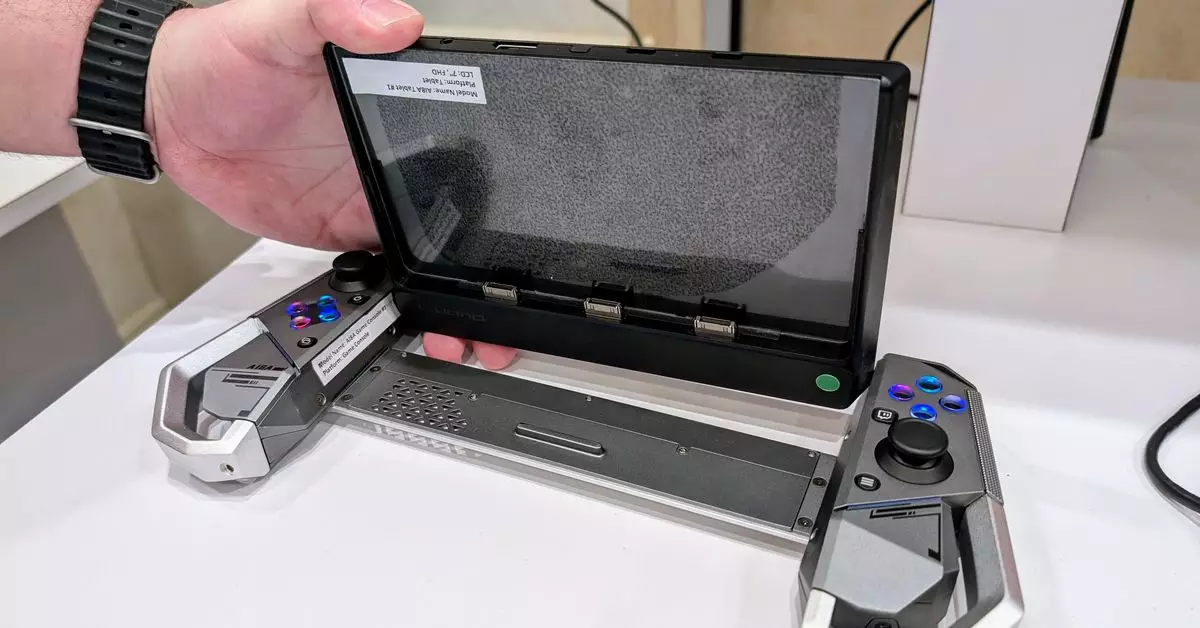CES (Consumer Electronics Show) is a premier platform where technology companies unveil their latest innovations, and CES 2025 was no exception. Among the pioneering ideas showcased, Intel’s “Innovation Showcase” attracted considerable attention. This exclusive event granted journalists a first-hand look at a range of groundbreaking concepts, including advanced laptops and sophisticated handheld gaming devices. However, perhaps the most intriguing reveal was the modular computing system led by Quanta, a company often overshadowed in the spotlight of brand names.
The Modularity Revolution: What is the AI8A?
At first glance, the modular system, dubbed the “AI8A,” appears to be a game-changer in the realm of personal computing. This system features a “Detachable AI Core” that serves as the central processing unit (CPU) of the device, containing all necessary components for operation. This concept reminds us of Intel’s earlier, yet unsuccessful, Compute Card project. However, the AI8A is distinct; it draws from the collaborative efforts of both Intel and Quanta, a formidable original design manufacturer (ODM) known for fabricating technology for renowned brands.
The AI8A presents an innovative approach, allowing users to upgrade their systems without replacing the entire unit. Instead, one can merely plug a new module into the computer. This modularity caters to consumers’ desires for longevity and adaptability in their tech equipment. In an era where rapid technological advancements render devices obsolete quickly, the concept of modular devices offers a refreshing take; users can simply swap out outdated components for newer ones.
In addition to its impressive modular capabilities, the design of the modular laptop houses a plethora of avant-garde features. For instance, the motorized hinge mechanism allows the device to autonomously open and close, promising a blend of convenience and futuristic flair. Moreover, the laptop boasts eye-tracking capabilities, enabling users to manage multitasking windows merely by looking at them. Although these features appear appealing, one must consider how practical they would be in everyday usage and whether they could truly enhance user experience or merely serve as gimmicks.
Further diverging from traditional designs, the laptop integrates a mouse within a wearable ring, a concept that may appeal to tech enthusiasts but may confuse average consumers accustomed to conventional input methods. On the more practical side, a built-in Qi wireless charging pad within the palm rest offers users a seamless way to recharge devices, an increasingly vital feature in today’s world of portable technology.
While the AI8A and its modular design present intriguing possibilities, it is important to recognize the challenges and limitations inherent in such concepts. First and foremost, the likelihood of the AI8A transitioning from an intriguing concept to a market-ready product is uncertain. History tells us that many creative ideas, such as the Compute Card, struggle to find their footing in the real world.
Additionally, during the showcase, we witnessed the limitations of experimentation; journalists were unable to experience the technology in action, indicating that even if features appear revolutionary, their practical implementation might not be fully realized or operational. The AI8A may serve as a fascinating concept car for the tech world, yet translating such innovations into functional consumer products often proves complex.
Embracing Practicality: The Future of Modular Devices
Despite skepticism surrounding the AI8A, the notion of modularity is gradually gaining traction within the tech industry. Notably, Framework has celebrated its fifth anniversary, emphasizing the growing appetite for repairable and upgradeable laptops. Even Dell’s recent ventures into modular USB-C ports at CES highlight the industry’s recognition of the need for practicality in tech design.
While Intel’s ambitious concepts at CES 2025 showcase a bold vision for the future of computing, the successful realization of such ideas remains uncertain. Modular devices hold promise, but they must navigate the intricate balance between innovation and usability, the ultimate challenge in a rapidly evolving technological landscape. The future may favor those who can truly blend conceptual creativity with real-world functionality.

